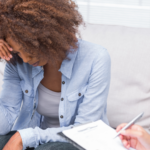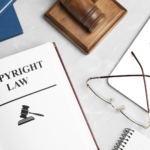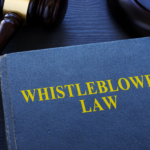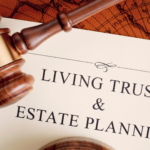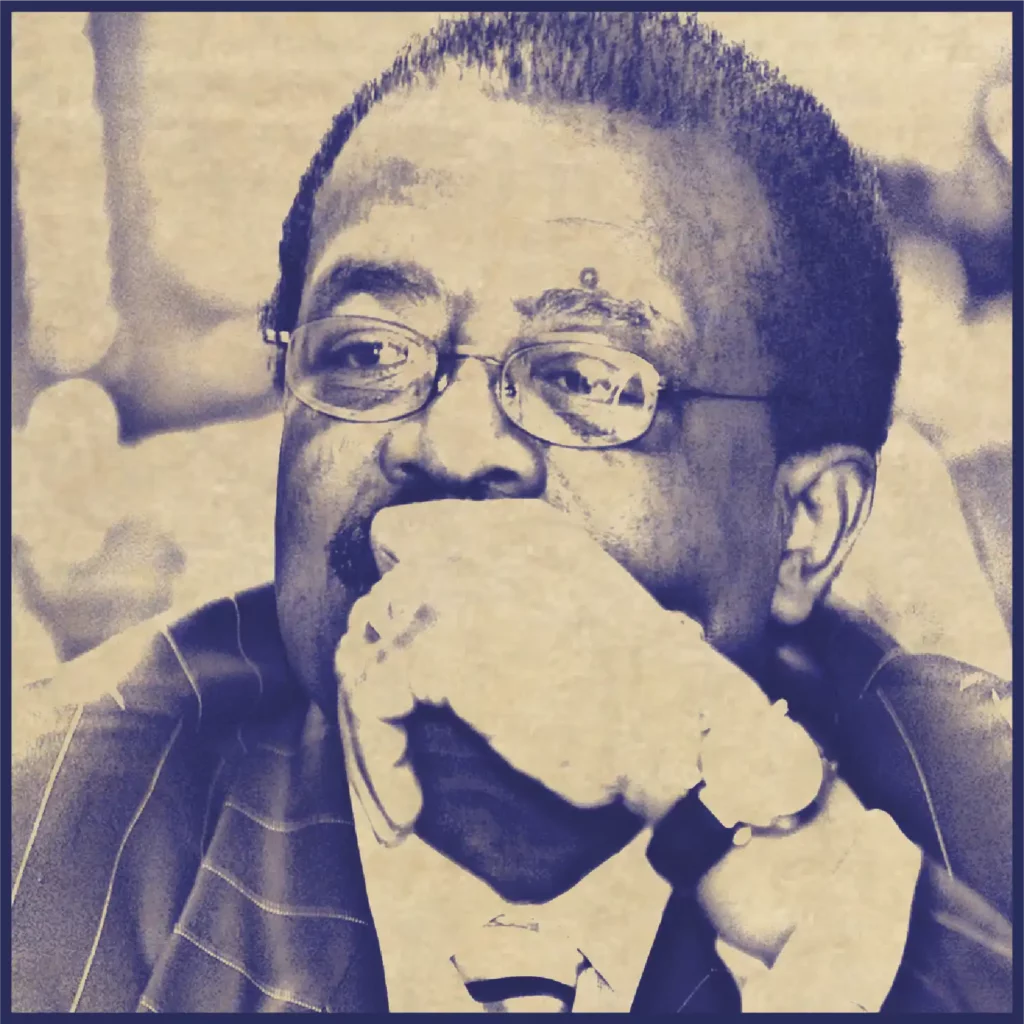During the 1950s and 1960s, the civil rights movement fought for social justice, primarily for black Americans to achieve equal legal rights in the United States. The Civil War officially ended slavery, but not discrimination facing the black community. They proceeded to sustain the overwhelming impacts of racism, notably in the South. Black Americans grew tired of prejudice and violence against them. Along with several white Americans, they assembled and launched a unique battle for equality that crossed two decades.
During Reconstruction, black individuals held leadership roles. They took public office, desiring equality and voting rights. The effort of the Reconstruction from 1865 to 1877, following the Civil War, was to restore the unity of Southern states from the Confederacy and four million recently freed slaves into America.
The 14th Amendment to the Constitution gave black Americans legal and equal security in 1868, and the 15th Amendment allowed them the right to vote in 1870. Yet, various white Americans were troubled that those they had once controlled were now on a sort of level playing field.
To diminish blacks, separate them from whites, and erase Reconstruction progress, “Jim Crow” laws were built in the South starting in the late 19th century. Black individuals were prohibited from accessing the same towns or schools as whites. Interracial marriage was illegal. Because they could not pass literacy tests for voting, nearly all black people could not vote.
These laws were not adopted in the northern states. However, blacks nevertheless encountered discrimination at work or in attempts to buy a house or receive an education. In some states, laws passed that limited voting rights for black individuals.
In 1896 when the U.S. Supreme Court affirmed in Plessy v. Ferguson that facilities for white and black people could be “separate but equal,” southern segregation gained ground.
Although all United States citizens attained voting rights, various southern states caused difficulty for black Americans. They often ordered people of color to pass confusing literacy voter tests that were misleading and included difficult questions.
Showing dedication to the civil rights movement and the minimization of racial strains in the South, Eisenhower’s administration pressed the U.S. Congress to recognize new civil rights legislation.
The Civil Rights Act of 1957 was signed into law by President Eisenhower on September 9, 1957. Since Reconstruction, this act was the first significant civil rights legislation that allowed the federal prosecution of individuals who attempted voting prevention. It also generated a commission to review voter fraud.
The Civil Rights Act of 1964—legislation launched by President John F. Kennedy prior to his assassination—was signed into law by President Lyndon B. Johnson on July 2, 1964. The act declared equal employment for all, constrained voter literacy tests, and granted federal authorities the right to ensure public facilities were integrated.
Advancing the Civil Rights Act of 1964, President Johnson signed the Voting Rights Act of 1965 into law on August 6, 1965, which banned the voter literacy tests and granted federal examiners in particular voting jurisdictions. The act also let the attorney general contest local and state poll taxes, resulting in the taxes later being pronounced unconstitutional in 1966 in the case of Harper v. Virginia State Board of Elections.
The Civil Rights Act of 1968, or the “Fair Housing Act,” presented equal housing opportunities regardless of national origin, creed, or race. It also illegalized the interference of housing opportunities and rights.
The Black Lives Matter movement protests following the police killings of Breonna Taylor, George Floyd, and Ahmaud Arbery remind Margaret Burnham of 1968. Back then, the public response to the murder of Martin Luther King Jr., coupled with continuous civil rights and Vietnam War protests, drove America further into division and turmoil.
Burnham is a respected university professor of law at Northeastern University School of Law and the director of the Civil Rights and Restorative Justice Project.
“This is taking place in a world that is not only deeply fractured, but also deeply fragile because of the coronavirus, the economic crisis that makes the country look a little bit like 1929, and the existential threat of climate change,” Burnham stated. “It’s everything collapsing all around us.
“People who are taking to the streets are doing so not just because they never thought they would see a lynching played out on video,” she says of Floyd, who died at the hands of a Minneapolis police officer. “But it’s also because they sense that there is no real plan either to face and defeat the virus or to acknowledge and defeat the pandemic of racism in this country.
“This is what has led to the frustration, as it has in the past.”
Founded in 2013, Black Lives Matter was born in response to Trayvon Martin’s murderer’s acquittal. Black Lives Matter Foundation, Inc has a mission “to eradicate white supremacy and build local power to intervene in violence inflicted on Black communities by the state and vigilantes.”
The new movement is powerful yet scattered, linked by the force of social media. A Twitter hashtag can link the fates of those shot by police, transcending locational boundaries and time zones. A publicly shared Facebook post can plan protests or gatherings.
Young activists are, at times, cautious of being named “the new civil rights movement” because the label cripples the traumatic reality of what is being faced by black Americans and also because the new movement has not matured.
“Social media plays a big part in everything. I find out information, I put it on Twitter, it starts trending the more people talk about it, and then the institutions start feeling the pressure,” Kwame Rose, a young Baltimore civil rights protester, says.
Kwame’s father taught him at a young age about civil rights history. Now, he understood he was battling the same fight. Kwame quotes James Baldwin by explaining: “To be black and conscious in America is to be in a constant state of rage.”
“I see what’s being done, and I’m mad about it,” he proclaimed.
Divisions are reasonable as a movement develops. Alicia Garza, a co-founder of Black Lives Matter, reveals how the organization has been pieced apart by groups who have sought to modify the movement’s message to declare that “All Lives Matter.”
“The reality, of course, is that they do,” she responds, “but we live in a world where some lives matter more than others. ‘All Lives Matter’ effectively neutralizes the fact that its black people who are fighting for their lives right now.
“I have to be honest, I feel like I live in a constant state of rage, and I think a lot of black people do… It’s more than depressing to me. It makes me angry, particularly when people try to deny it’s happening.”
George Floyd lived as a 46-year-old dad, spending most of his life in Houston, Texas. Charged in 2007 with armed robbery, Floyd engaged in a home invasion in Houston. In 2009, he began a plea deal sentencing him to five years in prison. Several years later, Floyd sought a fresh start. Unemployed, he moved to Minneapolis to attain work, settling down as a truck driver and bouncer. Before the man’s death, he worked as a security guard at Conga Latin Bistro, an American Latin restaurant, in the city. However, due to the COVID-19 stay-at-home orders, he was left unemployed.
Officers responded to a call on May 25 from a store worker who claimed Floyd used a fake $20 bill to purchase cigarettes. The store’s owner Mike Abumayyaleh told a news source that Floyd regularly came to the store and never caused issues.
On June 1, a medical examiner listed Floyd’s death as a homicide, stating that his heart ceased as the police pressed on his neck and held him.
According to information from the Hennepin County Medical Examiner’s Office, the cause of death was noted as “cardiopulmonary arrest complicating law enforcement subdual, restraint and neck compression.”
“[Floyd] experienced a cardiopulmonary arrest while being restrained by law enforcement officer(s),” it concluded. Listed under “other significant conditions,” the office stated Floyd suffered from heart disease and hypertension. Also recorded were fentanyl intoxication and the recent use of methamphetamine. These determinants were not classified under Floyd’s cause of death.
A separate autopsy sent for Floyd’s family also described his death as a homicide, concluding that asphyxiation due to back and neck compression was the cause of death. The autopsy found the compression stopped blood flow to his brain and made it impossible for Floyd to breathe.
Derek Chauvin, Thomas Lane, J.Alexander Kueng, and Tou Thao were the four Minneapolis officers who were present when Floyd was restrained. Chauvin was seen in the viral footage kneeling on the man’s neck.
Chauvin, charged with third-degree murder and second-degree manslaughter, and his undesirable act of restraint triggered protests across the world, later receiving a charge increase to second-degree murder.
The other three police officers were fired the day following his death. Not initially charged, the three are now charged with second-degree manslaughter and aiding and abetting second-degree murder.
Hundreds of individuals engulfed the streets of the same crime scene on Tuesday to protest Floyd’s death. Shouts of “I can’t breathe,” echoed.
“We’re here to let them know this can’t be tolerated, there will be severe consequences if they continue to kill us this will not go on another day,” one demonstrator declared.
At approximately 6 P.M., the rally transformed into a journey towards the 3rd Precinct. Individuals began rioting, vandalizing the building and squad cars, and breaking windows.
“It’s real ugly. The police have to understand that this is the climate they have created, this is the climate they created,” another protester responded.
Officers subsequently appeared in riot gear, hurling tear gas and flash grenades as protesters threw rocks, water bottles, and more items at the Minnesota officers. The violent crowd was measured in the hundreds.
Police published the identities of the four officers involved in the death of Floyd: Derek Chauvin, Thomas Lane, J.Alexander Kueng, and Tou Thao.
President Joan Gabel of the University of Minnesota proclaimed they would no longer contract with the police department for law enforcement support during significant events or for specialized services.
George Floyd’s death remained under investigation by the Hennepin County Medical Examiner.
Communities requested charges against the four police officers after they were fired Tuesday.
With remains of burned cars and buildings, vandalized businesses, and fires still ablaze in cities across America, firefighters and police worked tirelessly to remain order and safety.
President Donald Trump responded fiercely to the third evening of looting and rioting on Thursday.
“These THUGS are dishonoring the memory of George Floyd, and I won’t let that happen,” President Trump tweeted.
Various businesses were set ablaze by rioters attacking the 3rd Precinct. Jacob Frey, Minneapolis Mayor, announced it was his arrangement for police to evacuate the precinct, indicating danger.
“The symbolism of a building cannot outweigh the importance of lives of our officers or the public, we could not risk serious injury to anyone,” Frey stated. “Brick and mortar is not as important as life.”
Derek Chauvin, the officer who knelt on George Floyd’s neck, was arrested on May 29.
With strong ties to the neighborhood, Ellen Vanden Branden and Erin Horvath voluntarily helped to sweep charred wood, broken glass, and other debris outside of a burnt-out building on East Lake Street in Minneapolis on Friday, May 29.
Protesters erected a barricade, blocking traffic on I-35W on Friday, and attempted to pull items from the back of a UPS truck.
Three people were shot, and one individual died among protests in Indianapolis on Saturday. One officer sustained injuries.
Kyle O. and Andy Murphy of Boy Scout Troop 196, worked to clear debris outside of a store near the 5th Police Precinct in Minneapolis after another evening of riots on Saturday.
Multiple Seattle police cars were set on fire as the riots raged. Near Westlake Center, reporters filmed vehicles on fire beginning at approximately 4:00 P.M. local time.
A Los Angeles Police Department kiosk burned in The Grove shopping center.
Andrew Johnson helped to clean a looted Target store on Sunday. He responded, “It was destroying me to see the community like this, so I wanted to do something.”
A National Guard soldier, along with residents, helped clean up wreckage at a fast-food restaurant that was destroyed in the Minneapolis riots.
At least 25 cities in 16 states had imposed curfews. The National Guard had also appeared in about 12 states and the District of Columbia.
During protests on Sunday, Lexington, Kentucky, officers clad in riot gear knelt and prayed with protesters, even embracing the demonstrators.
According to department spokeswoman Brenna Angel, following the protesters' urge for officers to kneel, Lexington Police Chief Lawrence Weathers first took a knee.
“It was a beautiful thing,” youth activist Devine Carama informed CNN.
Over the death of George Floyd, the state of Minnesota filed a charge against the Minneapolis Police Department. It would investigate engagement in discriminatory practices.
Hennepin County District Attorney Mike Freeman and Attorney General Keith Ellison announced a charge of second-degree murder had been filed against Chauvin in addition to previous charges. The three former officers involved were charged and taken into custody.
Washington, D.C., named a road, painting "Black Lives Matter" on the street leading to the White House.
In Seattle, protesters forced police out of an entire neighborhood block.
On Monday, the Capitol Hill Autonomous Zone (CHAZ) or the Capitol Hill Occupied Protest (CHOP) was born.
The stand-off resulted from a confrontation with police after several tries at containing the area.
A Rhode Island school teacher, along with two individuals, were arrested after vandalizing a statue of Columbus. The three were charged with conspiracy and desecration of a grave/monument.
Hundreds of people marched on Friday in observance of Juneteenth, which "commemorates the U.S. abolition of slavery under President Abraham Lincoln’s 1863 Emancipation Proclamation, belatedly announced by a Union army in Galveston, Texas, on June 19, 1865, after the Civil War ended."
Emotions soared in Atlanta, where Rayshard Brooks was shot dead by a policeman at a fast-food restaurant on June 12. The Atlanta policeman was fired and charged with murder.
Mark and Patricia McCloskey, a St. Louis couple, are being investigated by local law enforcement after being seen on video brandishing guns at their home after protesters broke through the gates of their private neighborhood.
Under Missouri’s Castle Doctrine, “a person has the right, has the absolute unmitigated right to protect his or her castle or family while on their property,” the McCloskeys’ attorney Albert Watkins said. “And in this particular fact situation, you have individuals who are acting on private property, trespassing as lawbreakers onto private property, damaging and destroying private property and acting in a threatening and hostile fashion, such as to give rise to what any human being would consider to be placing them in a position of abject horror and certainly in a position of feeling in fear of imminent harm.”
Based on the information, police noted the incident as a case of trespassing and assault by intimidation.
Watkins said the McCloskeys have been practicing law for more than thirty years and “their practices have included, on an ongoing basis, representing individuals in pursuit of protection of their civil rights.”
“I do civil rights cases. Right now, I’m representing a young man who was assaulted by the police who is sitting in prison right now for being involved in a car accident after which the police came in and assaulted him. It’s on video,” Mr. McCloskey said in an interview. “I mean, I have on the wall of my conference room, I’ve got an anti-slavery broadsheet, the abolitionist broadsheet from 1832. It’s been there as long as I’ve owned this building.”
Independence Day was also a day of protest in Minneapolis. “We’re the free people of America, and we’re here to try to really change the country,” Royce White, a 10K Foundation associate, stated. Many individuals took part in “The Black 4th.” They assembled on bikes, skateboards, and rollerblades to call for reforms with the nation’s immigration policy and change following Floyd’s death.
KSTP
“A large focus of today is on the ICE (Immigration and Customs Enforcement),” said one person named Pryih. “With what’s going on, particularly at the border and in the concentration camps, and how we feel how that fundamentally goes against basic human rights.”
The George Floyd protests are familiar to preceding demonstrations. By the third week, protests spread to around 650 cities across America.
The demonstrations are progression for those demanding justice for Floyd, police reform, but an overhaul of the justice system in America.
Racial views have stirred over the last four years, and the New York Times reports: According to a new study from Monmouth University, 57% of Americans believe that police are using excessive force against African Americans, compared to just 34% of registered voters in 2016 after the police shooting of Alton Sterling.
According to research, individuals of any color are likely to be killed by police, with black men, American Indians, and Latinos the most at risk.
It is reasonably early to explain what happens next. Racism calls for policy changes, from housing and transportation to food security, which some claim remains low on the priorities of the United States. The current momentum extends hope that perhaps this era will be different.
The physical, emotional, financial, and legal consequences of police brutality can be staggering. We place much trust in the police, and a betrayal of that trust should not go unacknowledged or un-pursued. Our police brutality lawyers will not allow that.
At The Cochran Firm, we will be there for you. Our lawyers will listen to your story and advise you on how best to proceed with your claim.
The Cochran Firm built its reputation on the back of its civil rights and police brutality cases. Our founder, Johnnie L. Cochran, made his name in Louisiana and Los Angeles, representing those mistreated and wronged by the police. He believed in serving those wronged, no matter who they were and where they came from. As his status grew, his principles remained the same – stay humble, work fervently, and help those in need. Long after our founder’s passing, his principles live on in the Firm he built.
If you have been mistreated or wronged, a lawyer can help. Please call The Cochran Firm’s 24/7 call center today at 1-800-THE-FIRM (673-1555) or send us a message on our website.
Contact us today for a Free Consultation
